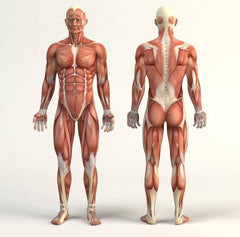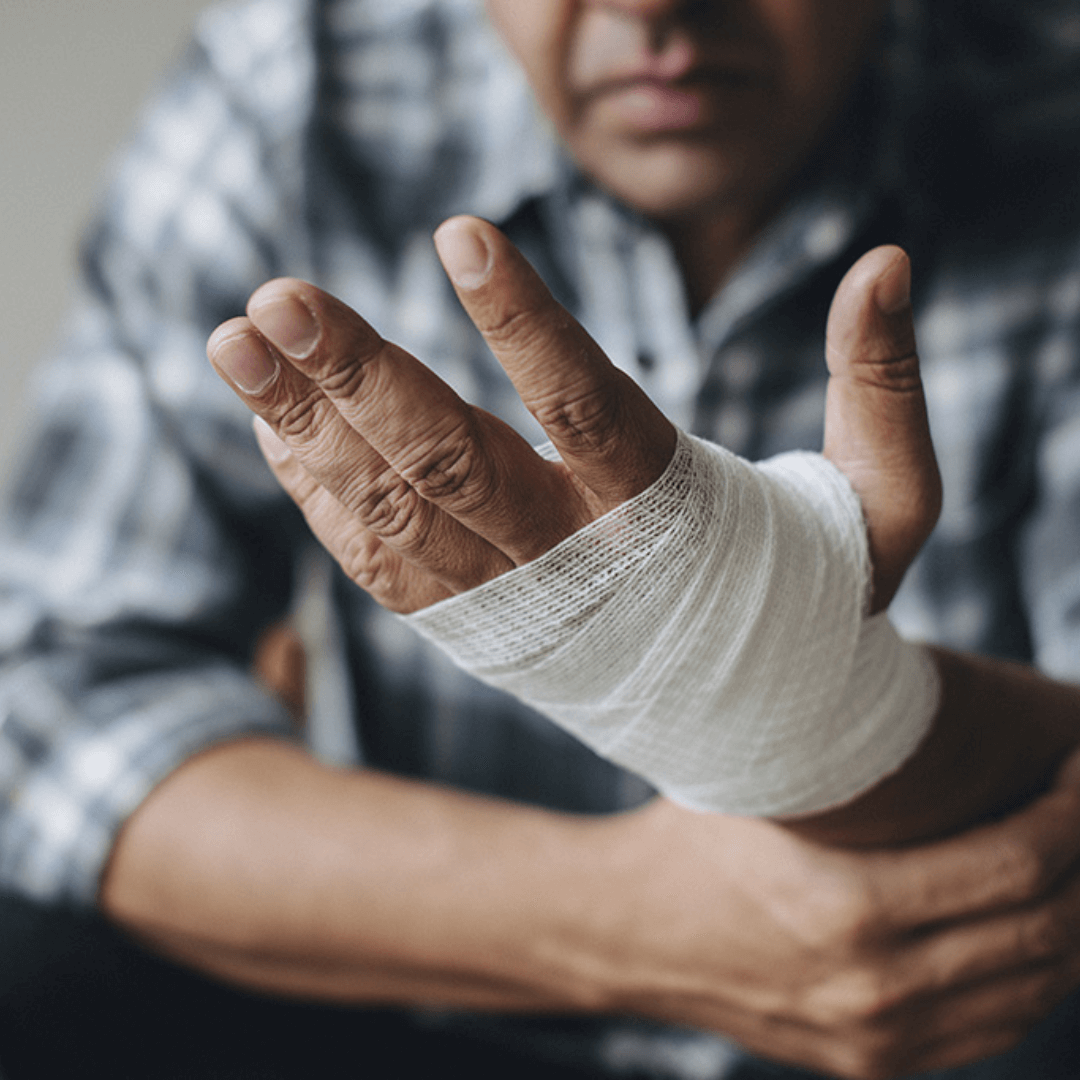Once injured, it's obviously important to work hard on your rehabilitation and recovery.
Allowing any damaged, irritated, or overloaded tissue to settle is usually step one. Progressively re-building your strength, mobility and function often encompasses the rest of that journey.
But beyond the process of returning to normal (whatever that may be), have you ever stopped to think about WHY you became sore or injured in the first place?
Did you ever wonder why your back became sore doing something mundane and simple?
Why did your right knee become sore and not your left?
Why did you wake up with a stiff neck when you didn't have one before going to bed?
Was your injury a recurrence? If so, what were you missing?
By taking the time to both ask and answer simple questions like these, you can take steps to uncover the rich underbelly of hidden dysfunction that may have ultimately set your tissue up to fail when it did.
More importantly, it may provide the necessary context to understand what you may need to change to give yourself the best chance of resolving things long-term.
So let's discuss some important concepts that might help you find that "ah-ha!" moment you may not have realised you were looking for!
What is Normal?
Before we can figure out what may have led you down the path of injury and dysfunction, it's important to understand what normal is. Or at least what it should be. And by most definitions, normal is usually considered "natural".
This may sound obvious, but the following are 100% normal and natural to the human body:
- The ageing process
- Using your body
- Repetitive activities
- Growing
- Being barefoot
- Being pain-free
Intuitively, we know these are normal, but it's easy to lose this perspective if injured or in pain.
So let's flesh them out a little more...
Ageing
Ageing (unfortunately) affects us all. There are certainly a number of normal physical age-related changes one might expect to experience. For one, our peak function tends to reduce across the board.
Whether it's peak sprint time, maximum lifting capacity, or even just our general reflexes, we certainly can't expect our 80 year old self to out-do our 25 year old self physically.
In terms of pain, many do become more sore or injured with age. But, should we become sore or injured BECAUSE we age? Is there more to this than age alone?
Clinically, we see so many people develop one-sided hip, knee, back, and shoulder pain labelled "age-related". Yet clearly both sides are the same age.
So this alone suggests there might be more going on than many initially realise. What is time exposing?
Growing
We can also take the same approach with "Growing Pains". Growing is obviously an expected part of our adolescence. Yet so many of our kids also develop one-sided knee and ankle pain, or at least have one side that feels worse than the other.
It's obvious that growing is involved, but is it THE main issue at play?
Or is something else going on that's exposed by a growing body?
Movement
Similarly, how often do you hear of someone hurting themselves by "moving the wrong way", or through "over use". And while this does make a lot of sense on the surface, we start running into an issue when we realise that movement and use is not only normal, but vital for optimal human function and adaptation.
In theory, there shouldn't be "bad" movements, just movements that are better at exposing underlying dysfunction than others.
In a perfect world, should repetition cause pain? Or, should it just make us better at what we are doing?
Repetition is an important ingredient to improving strength and conditioning. Without repetition, there's no skill acquisition, no improved fitness, no learning, no practice making perfect.
If we experience pain and injury with use, does this again suggest an exposure of pre-existing, albeit relatively hidden dysfunction?
Barefoot
Finally, it's important to reinforce the idea that a bare foot is a normal foot. In theory, we have all the heel and arch-support we need pre-built into our feet. That's not to say that everything is currently functioning optimally for someone, but the potential is there nonetheless.
If a pair of shoes or orthotics improve how your aches and pains feel, are they fixing things? Or just compensating for something you're missing?
Similarly, if being barefoot makes you feel sore and uncomfortable, does this mean being barefoot is bad for you? Or could you be missing some of the basics needed for good barefoot function? If so, what are these basics you're missing?
Clearly each of the above have become very logical and excusable reasons for pain and injury. However, if we shift our perspective just a little, we might just uncover the relatively hidden features setting us up to fail. Are these concepts causing our pain or just exposing something underneath?
This may sound like semantics, but that distinction is crucial to fully understanding the cause and any potential long-term resolution to pain and injury.
We just need to figure out what (and where) your hidden dysfunction might be.
What is the True Cause of Your Pain or Injury?
In order to uncover the underlying cause of your pain or injury we need to take a step back. So much so, that we can't just focus on where your pain or injury lies in isolation.
The human body isn't made up of individual joints and tissues floating around independently in space. Everything works together. It's a closed system. And if we don't look at things in context, it's much harder to understand why one part of a usually robust and complex machine has failed.
So consider these five simple principles:
1. Nothing Hurts Until it Hurts
The moment you hurt yourself doesn't always mean the start of an issue. It just means things started to hurt... when they started to hurt. It's the moment when you went from not being painful, to being painful.
Sure, some injuries are obvious when they occur, but that still doesn't mean your tissue was perfect pre-incident. Again, it just means you weren't injured beforehand. It doesn't mean the way your tissue was functioning pre-injury was perfect.
And this little distinction can be quite powerful when trying to figure out why you hurt yourself. It also suggests that the thing you were doing during the onset of your complaint may not always be the problem. It is potentially more likely to be the trigger, not the cause.
This idea also becomes important at the other end of your rehab.
Just because your pain and injury feel better doesn't necessarily guarantee you've re-gained full function again.
2. Look Above & Below Your Issue.
If you've hurt your knee, it's easy to primarily focus on your knee. It makes sense. It's where it hurts. But this can distract us from one simple idea:
Your knee is stuck in between your ankle and hip.
And any relatively hidden dysfunction in these areas may cause compensatory consequences felt at the knee. Yes, you ruptured your Anterior Cruciate Ligament (ACL). But considering you did so changing direction, was your knee compensating for a dysfunctional ankle and/or hip?
Do you struggle with lower back pain? If so, it might be worth exploring your thoracic spine and hips. Again, it's all connected.
Did your L5/S1 disc bulge because you were using your body? Or did it bulge because of HOW you were using a body that had become fundamentally different thanks to strong hip dysfunction directly below the area?
What about your shoulders? It's easy to forget that your shoulder sits on top of a shoulder blade.
Furthermore, it's even easier to forget that your shoulder blade sits on top of your upper back, and that a lot of muscles attach from your neck into your shoulder complex.
It's hard to have good shoulder function if your neck, upper back and/or shoulder blade aren't doing their job.
Yes, your shoulder joint may specifically be sore or injured somewhere, but the answer as to why that may be might actually reside somewhere else.
3. Is Something Weak?
When investigating areas above or below your complaint, there are a few things to keep an eye out for. One of these is muscle weakness.
This is often the most obvious issue to address and weakness is easy to test for and also feel.
If a muscle is weaker than it should be you may be missing crucial support or structural integrity needed for normal joint, limb or trunk function. This could be a weak quad muscle directly influencing the function of your sore knee. It could also be a weak hip muscle that fundamentally changes the way your entire leg functions, leaving your knee vulnerable to altered loading over time.
If your shoulder blade isn't strong or stable enough, the consequences can be felt in potentially every shoulder joint tissue or structure that's anatomically or functionally related.
Perhaps your shoulder impingement isn't a local issue in isolation but a consequence of instability or weakness somewhere else.
Is your trunk weak? A strong and stable trunk lays the foundation for all upper and lower limb function to occur. Do you keep injuring your hamstrings? Yes, you may have hurt your hamstring sprinting, but again, sprinting is normal. But is it genuinely sprinting's fault if your hamstring is constantly being asked to compensate for a sub-optimal core strength and function?
Understanding where you might be weak is an important consideration when trying to understand the mechanisms that may have led to your pain or injury - especially if you don't want it to return.
4. Where are you Restricted?
Similar to weakness, restricted tissue has just as much potential to set us up for pain and injury.
If your hips are restricted, this may have genuine mechanical consequences for the way you load your lower back and legs. If you need to bend over or lean forward, but lack sufficient hip range to do so, your body may ask your back to make up the difference. With this in mind, was that one time you "moved the wrong way" the start of something brand new? Or was it the last straw?
A restricted ankle may mean your leg has to move around that restriction rather than through it - fundamentally altering how your shin, knee, thigh, and hip express themselves. If freeing up your ankle improves how your knee pain feels, you may have just found the hidden handbrake you were looking for.
Similarly, if you have some nasty wear and tear in your lower neck, is age the cause? Or is that seriously stiff upper back, which sits directly underneath it, a more likely culprit given enough time?
Ultimately, restricted tissue is a little harder to identify if you aren't looking for it. The body will often move around a restriction rather than through it making it trickier to notice feelings of tightness or stiffness with general movement.
5. How are you moving and positioning yourself?
Not everyone is restricted or weak somewhere. Some people just haven't been made aware of how best to use or position the body.
This may sound like motor control to some. It may sound like "technique", or "posture" to others. But it's important to understand how our tissue likes to be used if we are searching for clues as to what normal circumstances might be exposing.
One simple visual clue is something called the Anatomical Position:

This graphic highlights the best "posture". It's essentially the best expression of our anatomy and where things should ideally be if possible. And it's no surprise. The spine is straight, the head isn't tilted down. The pelvis isn't tilted forward, the shoulders are back and the feet are straight.
Interestingly this anatomical position also relates to sitting. How close to this shape are you when sitting at your desk for work? What about when you're relaxing at home on the couch? Are you constantly putting your tissue into sub-optimal positions and shapes each day?
What happens if you then take that same tissue and try and run really fast with it? Or try and lift something heavy? Or do something repetitive? Nothing is guaranteed to go wrong, but if it does, hindsight may be quite clear.
We can take a similar approach to sports and activities. If you are lifting something heavy or sprinting 100m, we have a good understanding of what optimal technique may look like. You may have full range of motion and fantastic strength, but without understanding how to put it together correctly, you may be loading your tissue up in an unsustainable way over time.
The ability to move well and position yourself accordingly may also sound obvious, but it's a box that needs to be consistently checked if trying to uncover the underlying cause of your pain or injury.
At the end of the day, it's important to realise that pain and injury are seriously complicated things.
A lot can go into even the simplest of injuries. And if possible, we should continue to try and look beyond common explanations that one might deem "normal".
There can be a number of contributing factors beyond the more obvious musculoskeletal concepts referenced above. Sleep is important. As is nutrition and hydration. Stress and its effects on our nervous system can't be overlooked either.
But if one specific part of your body has become painful at a specific point in time, something has to be behind it. Otherwise it's intuitively sensible to assume we don't deserve to be in pain or injured.
And remember, being pain free and uninjured is normal too.
If you'd like help trying to uncover the underlying cause of your pain, consider booking in an online consultation with Grant here!


